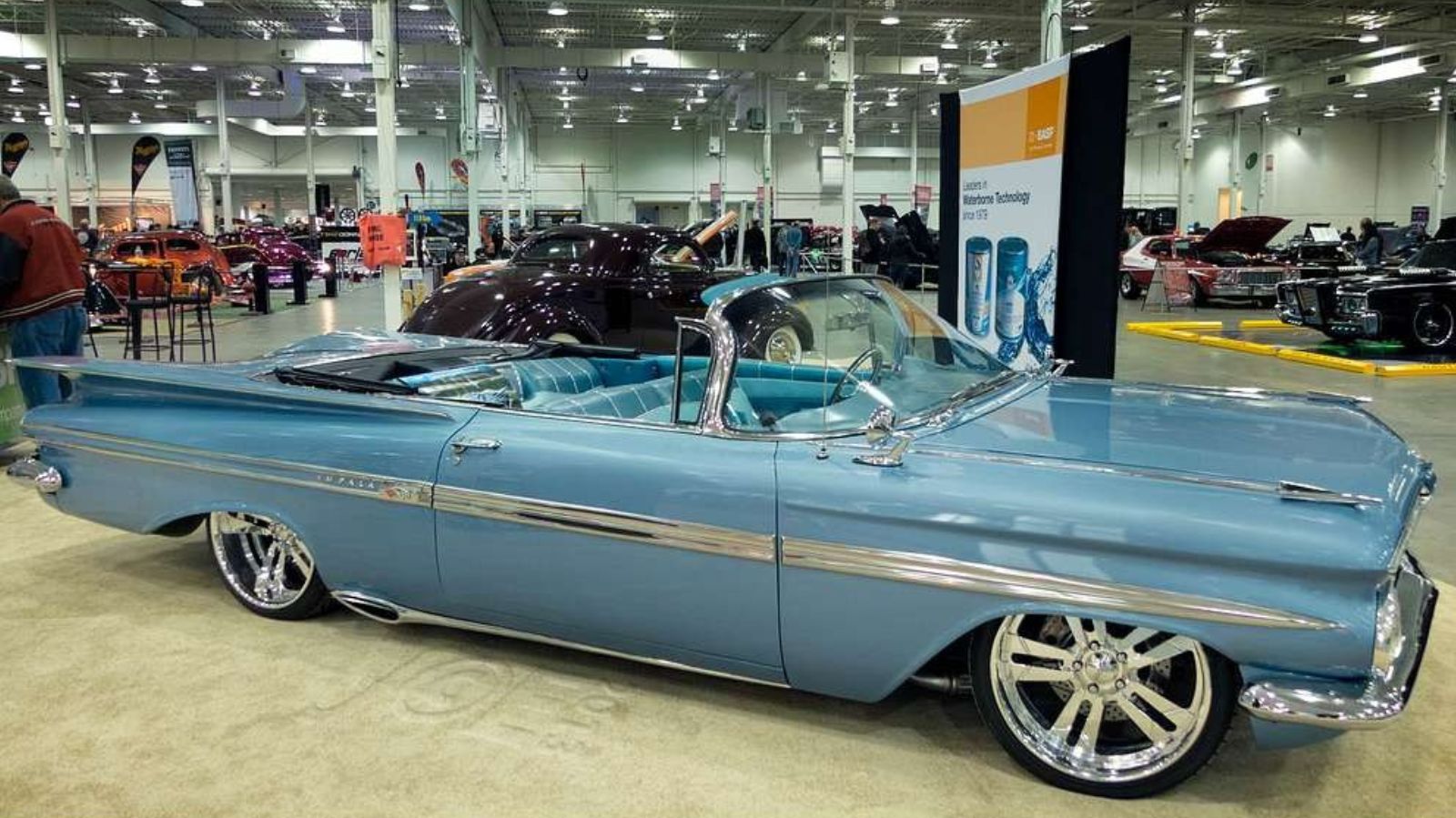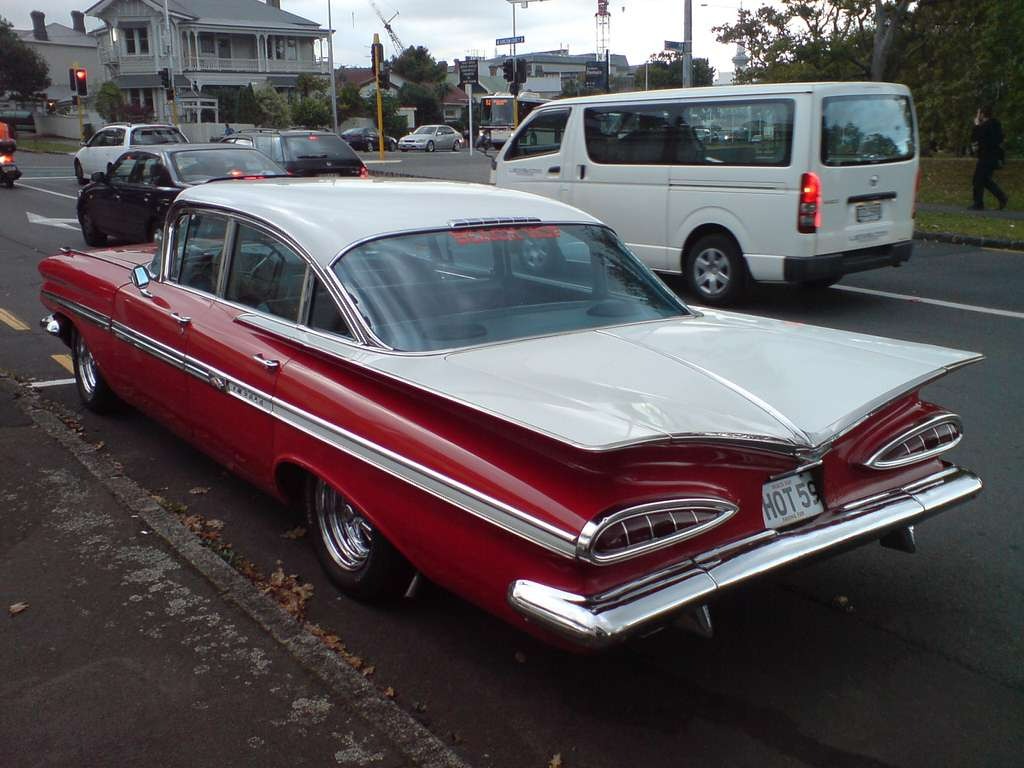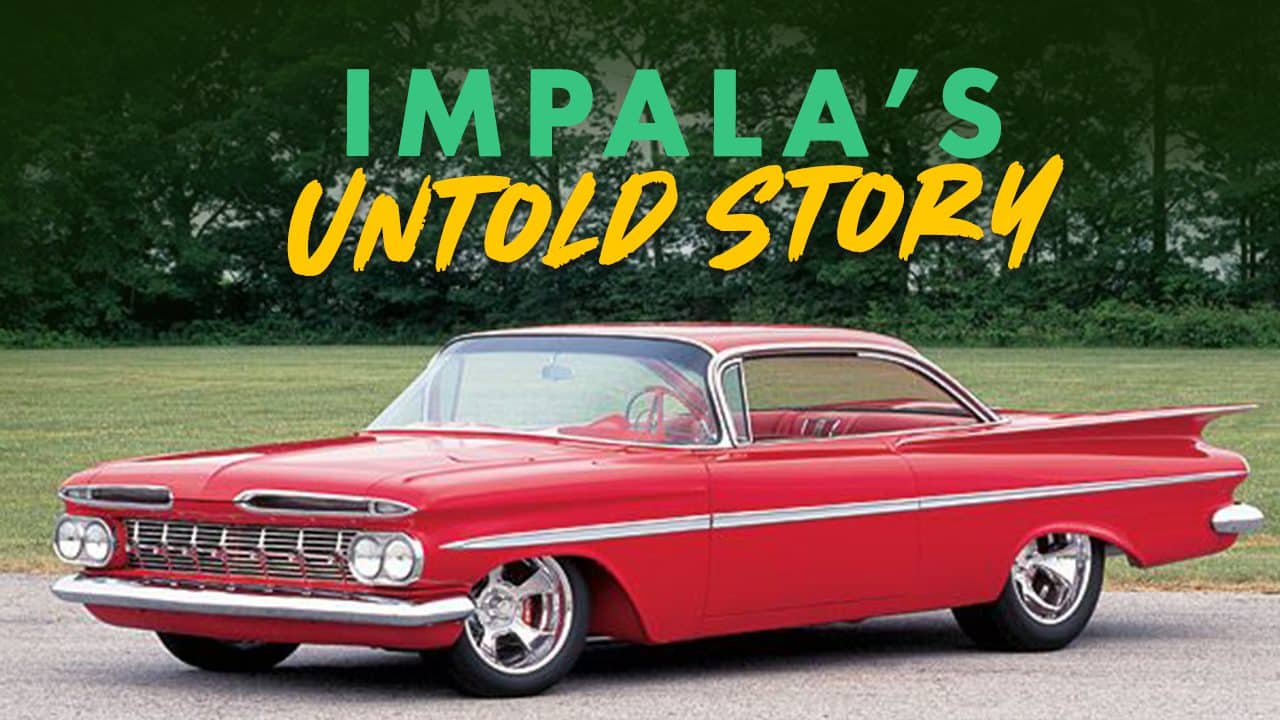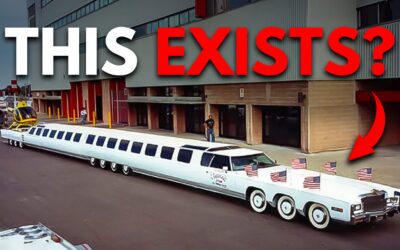The 1959 Impala was automotive theater that rewrote the rules of American car design. When this chrome-laden beast rolled into showrooms, it practically caused whiplash. Six decades later, this particular model year stands as the most visually distinctive and culturally significant ride in the entire Impala bloodline. From revolutionary features that predicted modern tech to design decisions that still influence cars today, these facts reveal why the ’59 remains Detroit’s most legendary creation.
19. Design Battle Behind the Batwing Tail Fin
The 1959 Impala’s batwing tail fins are an instantly recognizable automotive form. The design resulted from a collaborative tension between Harley Earl and Ed Cole. Both were passionate about making the Impala something special. Harley Earl initiated the aggressive sculpting of the tail fins. Ed Cole, equally enthusiastic, then carved them even deeper. Mckitan noted this back-and-forth push to design boundaries. The rear 3/4 view is often considered a spectacular example of automotive design. Their collaborative approach, despite inherent tensions, resulted in a uniquely iconic feature. The batwing’s impact on design is a testament to the team’s creativity.
18. GM Saved Money by Only Finishing Half the Tail Fin

Small details of the 1959 Impala reveal efficient manufacturing processes. GM aimed to balance aesthetics with cost-saving measures. Finishing metal cost about 75 to 80 cents per inch back then. This is equivalent to about $7 to $8 today. So, to reduce expenses, GM only fully finished the bottom part of each tail fin. The top part was left unfinished, saving money on metalwork. This clever trick maintained the car’s overall visual appeal. Few noticed the subtle difference, showcasing smart engineering. The decision effectively reduced production costs without compromising the iconic design. It showcases GM’s ingenuity in maximizing profit margins.
17. Steering Wheel Changed Because Drivers Honked Too Hard

The 1959 Impala’s steering wheel change was a very practical design decision. The 1958 model featured a sporty, two-spoke steering wheel. It also included a full, circular horn ring. But drivers were pushing the horn too hard. The upper part of the 1958 horn ring wasn’t well supported. As a result, drivers were breaking it. So, the 1959 model redesigned the horn ring. They included only the lower half, which was more structurally sound. This change illustrates how real-world driver behavior impacts design. User feedback led to a more robust, functional steering wheel.
16. Roof Vents Were Just for Decoration

The peculiar small vent on the 1959 Chevrolet Impala hardtop is quite interesting. The vents were originally intended to be functional. The aim was to allow fresh air to enter from the hood. Engineers discovered the roof vent was in a low-pressure zone. Consequently, no air flowed through. Instead of redesigning the system, GM simply plugged those vents. Thus, the roof vents became purely decorative elements. An intention of function changed to aesthetics. This reflects an interesting compromise in the Impala’s design process.
15. Lowest Seating Position Ever on a Full-Size American Car

You almost feel like you’re sitting on the floor of a 1959 Chevrolet Impala. “Lower, longer, wider” was the design mantra of that time. The total vehicle height was just 55.9 inches (142 cm). To achieve this sleek profile, seats had to be mounted almost directly onto the floor pan. The low seating position created a unique driving experience. However, getting in and out of the car could be a real challenge for some people. This design choice demonstrates how prioritizing aesthetics sometimes altered practicality. The low seating position was a hallmark of the 1959 Impala.
14. Sharing the Body Shell with Buick and Other GM Divisions

It’s surprising how much the 1959 Impala borrowed from Buick. GM designers were stunned by Chrysler’s new models. As a result, GM scrapped their original designs for the 1959 models. Buick was assigned the responsibility of leading the design effort. The Impala shared front doors, windshield, roof line, and floor pan with some Buicks. Time was of the essence, so this sharing helped speed up the production. This allowed Chevrolet to introduce a modern design quickly. GM caught up with the competition by leveraging shared engineering.
13. Canadian Pontiacs Were Basically Chevys in Disguise

Some Canadian Pontiacs in 1959 weren’t entirely Pontiacs. Canadian market Pontiacs were built on the Chevrolet Impala chassis. Models like the Parisian, Laurentinian, and Strato-Chief were affected. GM wanted to produce cars locally in Canada to avoid tariffs. Using the shorter wheelbase of the Chevy chassis created an odd point, too. Manufacturing costs were lower, which helped keep prices competitive. Necessity created a unique product mix, reflecting Canada’s market realities. These “Cheviacs” demonstrate how practical decisions can influence car design.
12. Ramjet Fuel Injection Was Dropped in 1959

Chevrolet was a leader in automotive innovation back then. They had equipped the Ramjet fuel injection system on the 1957 and 1958 Impala models. Ramjet helped produce more horsepower. However, Chevrolet dropped Ramjet in 1959. Even though ramjet fuel injection was more reliable, buyers weren’t ready for such advanced technology. The technology was ahead of its time. It was too complex for mechanics. Eventually, electronic fuel injection returned. Its initial rejection demonstrates that innovation requires consumer acceptance. Sky-High Value Even When Beat Up or Even Engineless
11. Main Reason for the Value of 1959 Impalas

Early Impalas are undeniably popular among customizers. Classic car owners typically follow two paths: restoring or customizing. A perfectly restored original 1959 Impala sold for $220,000. Well-done restomods with high-quality craftsmanship can achieve values over $300,000. These cars provide a canvas for personalized upgrades. The drivetrain and components are often replaced with modern technology. The vehicle’s unique styling and upgradability keep demand high. That combination of popularity and modern technology increases the value of the car.
10. Customizers Like Starting with a Beat-Up Car

Why do customizers prefer a beat-up 1959 Impala? People buy Impalas in poor condition to restore or customize them from the ground up. The beat-up car isn’t scrap but a blank canvas. This provides freedom to create a personalized automotive experience. Even a beat-up car retains its original structure. The fact that the car is incomplete isn’t a big issue for these people. With a beat-up car, they can be free to create without limitations.
9. Car Name Was Inspired by Wildlife

The Chevy Impala was named after the swift Impala antelope. The Impala Antelope can run over 50 mph (80 kmh). Similarly, the Chevy was advertised as capable of reaching impressive speeds over 100 mph (160 kmh). The name evokes a sense of speed, grace, and power. This choice aimed to associate the car with these animal characteristics. The car’s name was fitting, given the vehicle’s sleek design and powerful performance.
8. Headlights Lowered to the Lowest Legal Limit

The 1959 Impala saw new improvements to the exterior features. The headlights were lowered by 7 inches. This new position was the lowest level permitted by US law. Traffic laws regulated the minimum position of headlights at the time. Lowering the headlights contributed to a sleek and aerodynamic design. This unique headlight position made the car easily identifiable. You could identify this car just by its headlight beam.
7. Cat’s Eye Tail Lights

The 1959 Impala added unique lighting to the rear of the vehicle. The tail lights had an elongated oval shape. These slender tail lights slightly pointed at both ends. Their shape evoked the image of a cat’s eyes. The taillights with the batwing created a visual highlight. Their distinctive design helped differentiate the Impala. These “cat’s eye” tail lights offered a unique style statement.
6. Famous X-Frame Was Considered Weak

The 1959 Impala featured an X-shaped frame design. Many users reported a lack of structural rigidity. One person recounted a story about their car door not opening because of frame flex. The frame could twist or flex slightly under stress. The X-frame is considered by many as a weakness. GM adopted it in place of a perimeter frame. It was considered safe at the time.
5. Iconic Car in a Shocking and Controversial Crash Test

The IIHS conducted a shocking crash test in 2009. The test pitted a 1959 Chevrolet Bel Air against a 2009 Chevrolet Malibu. The classic car easily deformed and crumpled. The video of the crash went viral. It sparked intense debate and conspiracy theories. It shattered the notion that old cars were sturdier than new cars. The test highlighted advancements in vehicle safety technology. But how could a car built so seemingly solid perform so poorly?
4. Debunking the Crash Test Conspiracy Theory

Rumors spread about the 2009 crash test results. People accused the 1959 Bel Air of being manipulated. Some claimed the frame was weakened or cut. However, the car showed no signs of significant structural rust. Additionally, there were no signs of tampering. Modern cars have calculated crumple zones. These zones are designed to absorb impact energy. The older car lacked these advanced safety features. The test results reflected engineering differences, not manipulation.
3. Breakthrough Flexomatic Six-Way Power Seat

The 1959 Impala had an interior upgraded. Having a power seat was a modern and premium feature. The Flexomatic system allowed the driver to move the seat in multiple directions. The seatback angle could be adjusted for comfort. The seat’s headrest could also be adjusted up and down. This six-way power seat enhanced driver and passenger comfort. The convenience represents a major step forward in automotive interior technology. All in all, the 1959 Impala was ahead of its time, boasting innovations such as the Flexomatic six-way power seat and the proactive Speed Minder speed warning system—just a couple of examples of the ingenious car inventions that made early Chevrolets so memorable.
2. Speed Minder Speed Warning System

Another interesting and unique feature was the Speed Minder system. The driver could set a certain speed on the speedometer. If the car exceeded that speed, a small chime would sound. This provided an auditory warning to slow down. The Speed Minder was a proactive way to encourage safer driving. It demonstrates how car manufacturers were beginning to think about driver assistance features. The warning sound helped drivers maintain control.
1. Shift from Sporty Car to Full Family Car

The original 1958 Impala was a high-end sporty trim level. In 1959, Chevrolet transformed the Impala into a complete model line. The ’59 Impala added four-door sedan and hardtop body styles. Customers could choose basic engine and transmission options. This broadened its appeal beyond sports car enthusiasts. This strategic shift placed the Impala at the center of the Chevrolet brand.






0 Comments